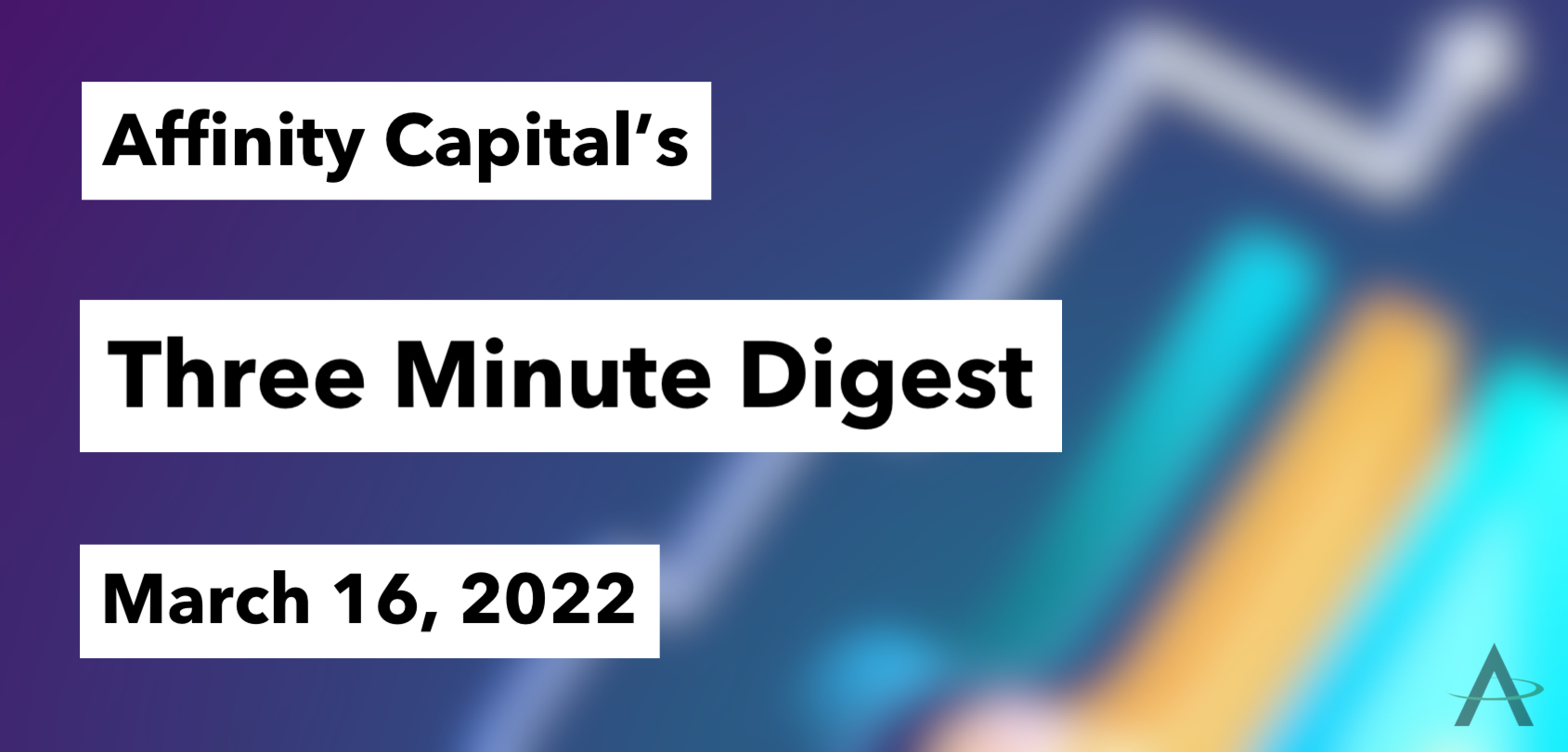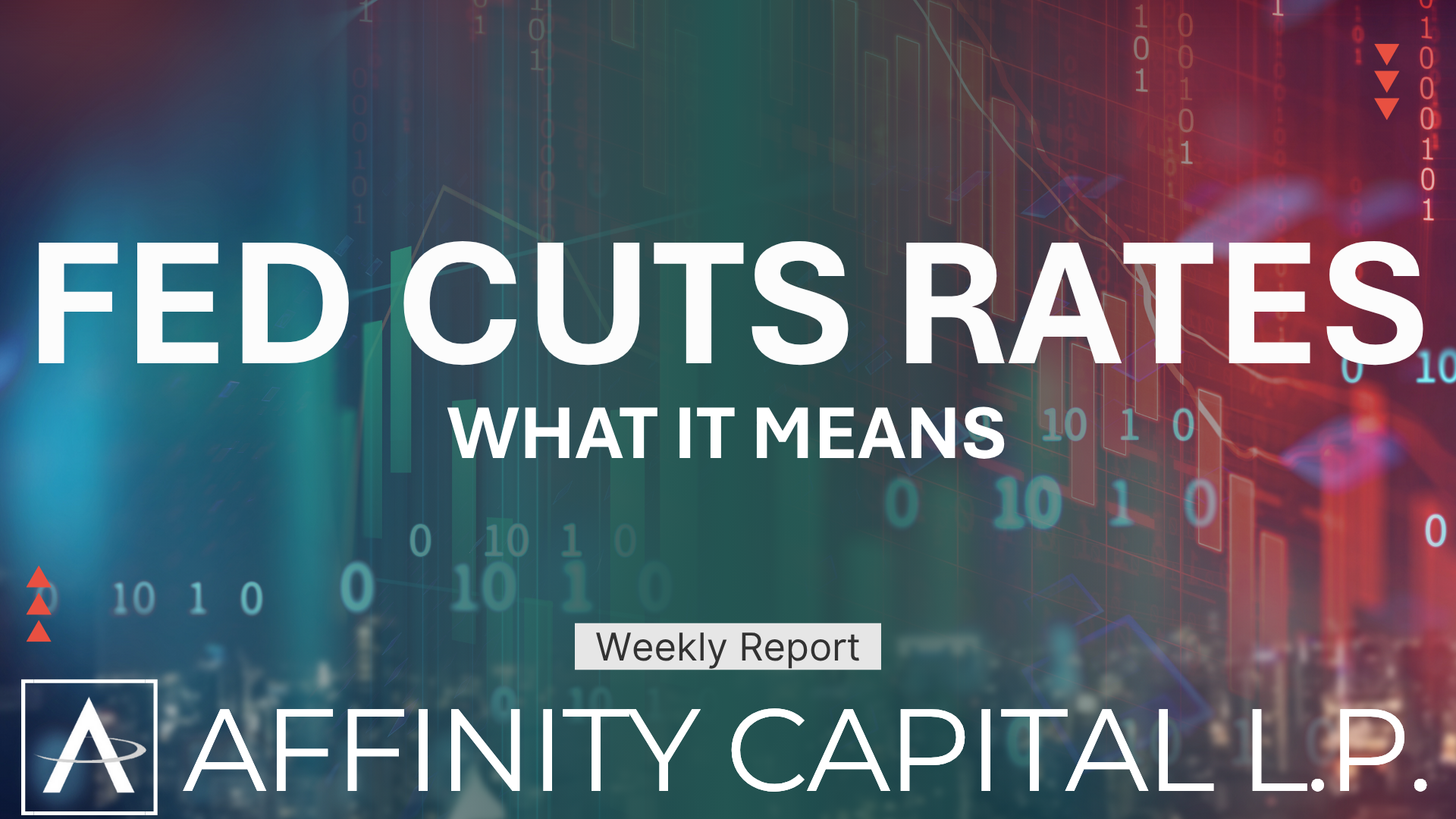Three Minute Digest for March 16, 2022

The Russia/Ukraine conflict is now in its third week, with faint hopes of a diplomatic resolution, as the two countries met for the second straight day today. So far, negotiations have ended without any progress on a ceasefire, and we are doubtful that Russia has any serious intentions other than placating the world community with talk until they hope to reach their military objectives.
The latest Federal Open Market Committee (FOMC) two-day meeting began yesterday, and a statement is traditionally released Wednesday afternoon at 1:15pm CST, followed by a press conference with Fed Chair Jay Powell. It is widely expected the Fed will hike the federal funds interest rate for the first time since December 2018 by 0.25%, in an effort to combat rising inflation.
Inflation
After steadily climbing throughout 2021 the inflation rate has hit a 40-year high culminating with the energy price shock due to the Russian invasion of Ukraine. The U.S. Bureau of Labor Statistics (BLS) reported that the Consumer Price Index for all urban consumers was up by 7.9% in the 12-month period ending February 2022, the largest 12-month increase since the period ending June 1982. This means a $100.00 basket of goods as measured by the Consumer Price Index in February of last year cost you $107.90 this past February. Inflation can be viewed as either the process of continuously rising prices or, the continuously falling value of money.
The Consumer Price Index or CPI
There are approximately 175 items in the basket of goods that make up the CPI. It includes products and services such as housing, transportation, recreation, apparel, and education. The basic measurement is telling us how much the price of that basket of goods has changed over a one-year period. While there are many economic measures of Inflation, the CPI is the most closely watched.
What is causing our current inflation?
Economists use statistics, and if you are a long-time reader of Affinity Capital commentary you know that one of our favorite quotes by Benjamin Disraeli, that we use a few times each year, is “There are lies, damn lies, and statistics”. Ask an economist and you will get varied opinions, but the answers lie in the confluence of supply chain issues, surging demand, increasing production costs, rising energy costs coupled with an energy price spike via Russian aggression and over $5 trillion dollars printed in Washington and pumped into our economy since the start of the pandemic.
How does inflation affect our investments?
We are in an odd circumstance in that inflation has been rising but interest rates have not followed suit. Although we expect the Fed to begin raising the Fed Funds rate today, it is only a benchmark to which the markets expect to react accordingly. Rising interest rates will decrease the value of bonds, but on the positive side will also boost their yields or payments made to bondholders. We presently hold securities that are designed to navigate a rising interest rate environment. Additionally, rising inflation and rates are not necessarily bad for stocks, which we will address in the coming weeks.
As always, please feel free to call with any questions or to set a time to visit for a personal portfolio update. We appreciate the opportunity to serve you!




